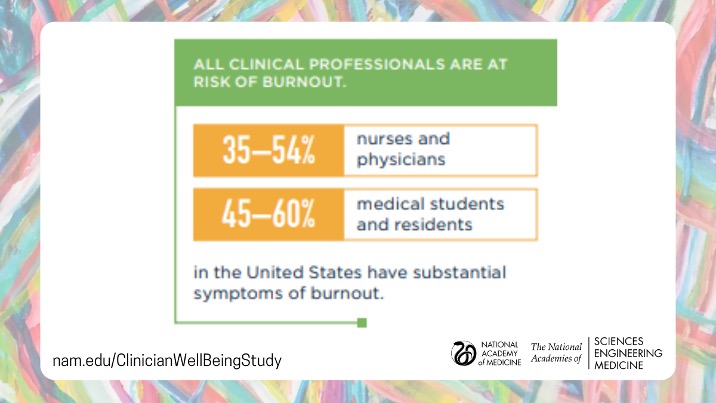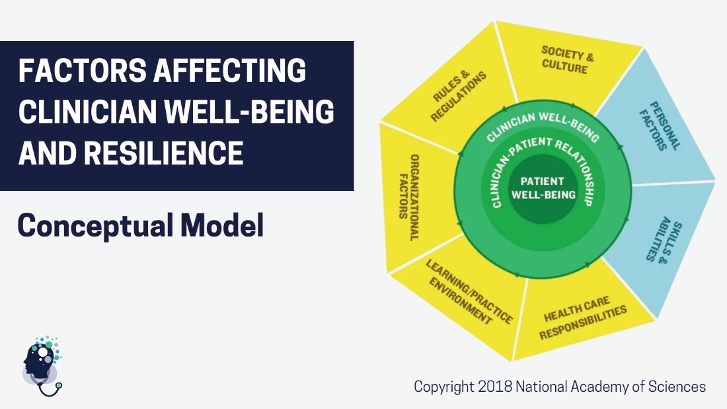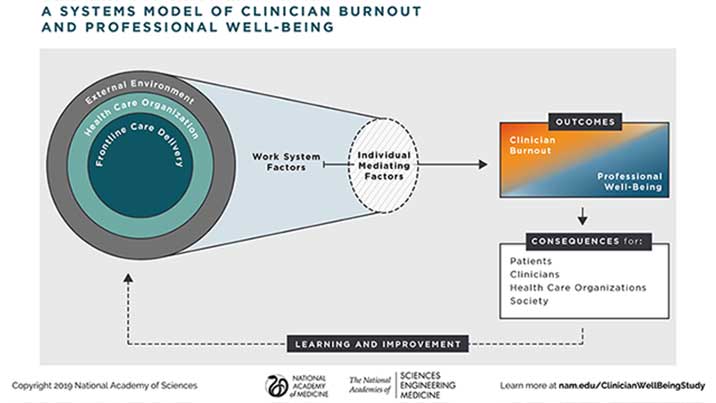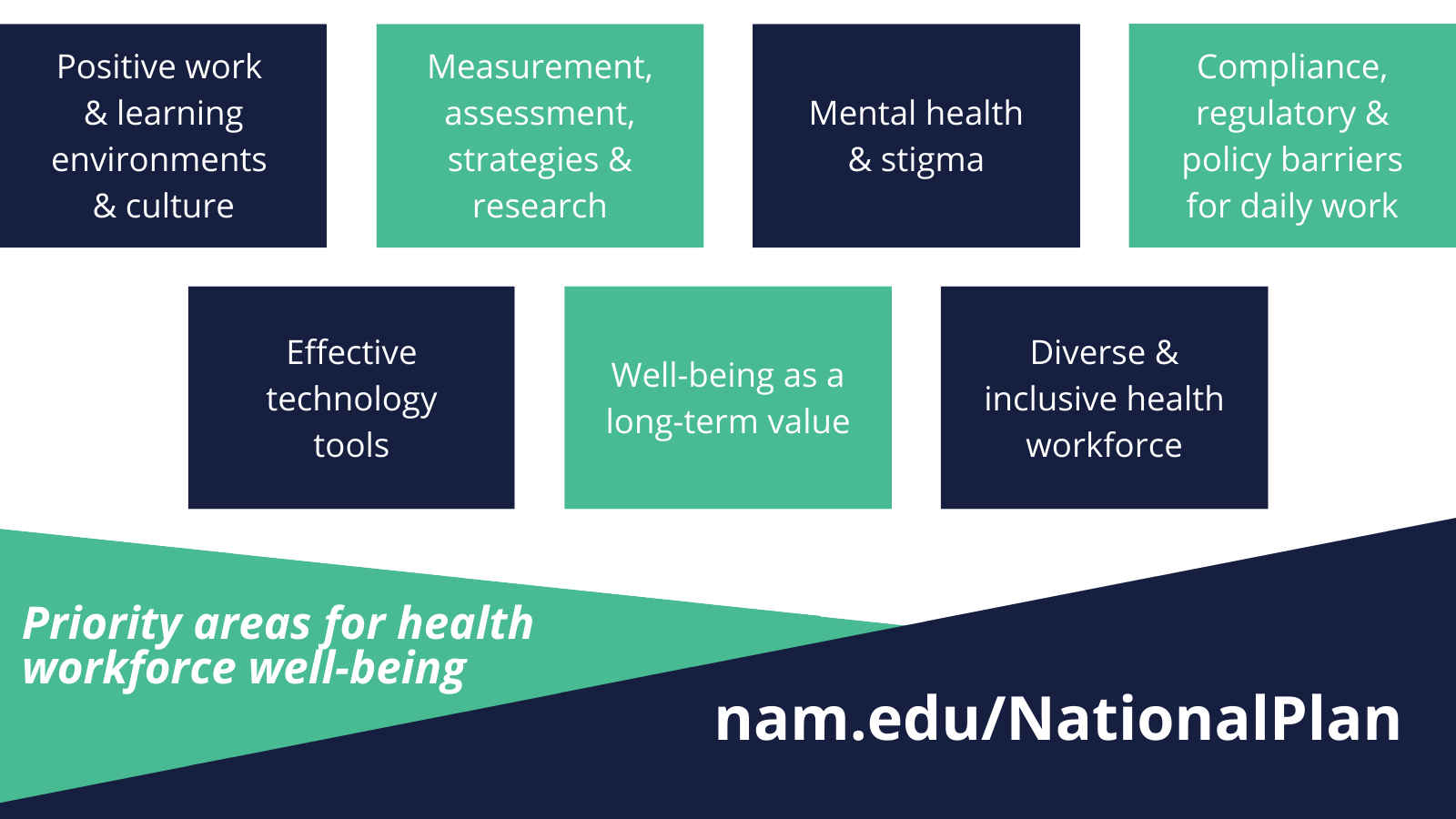When we invest in clinician well-being, everyone wins.
Taking Action Against Clinician Burnout: A Systems Approach to Improving Professional Well-Being
INTRODUCTION
Even before the COVID-19 pandemic, U.S. health care workers were feeling overwhelmed, frustrated, and stretched thin by a health system that often serves as a barrier to the vital clinician-patient relationship. A 2019 report from the National Academy of Medicine (NAM) found that the consequences extend beyond individual health care workers’ experiences of stress, burnout, anxiety, depression, and suicide. Clinician burnout is an occupational syndrome caused by mounting pressures in the U.S. health care system, which can adversely influence the quality and safety of patient care.
The report, Taking Action Against Clinician Burnout: A Systems Approach to Improving Professional Well-Being, emphasizes it is critical to address burnout not as an individual issue, but rather as a systems issue that stems from workplace culture, health care policies and regulations, and societal expectations. Building more supportive work environments will help address the serious public health concern of clinician burnout.
Making a commitment to invest in caregivers can lead to real improvements in their experiences, and is worth the time it takes. Janice Nevin, president and CEO of ChristianaCare, said, “We know that if we do not care for our caregivers first, it’s going to be very difficult for us to do what we need for our patients, for the communities we serve.”
The COVID-19 pandemic has made clear that health workers need more support from their health care organizations, health education institutions, and in the professional culture of medicine. We must build on lessons learned during the pandemic to better prepare our health workforce—the backbone of our health system—for the future. Supporting clinician well-being requires sustained attention and action at organizational, state, and national levels, as well as investment in research and information-sharing to advance evidence-based solutions. Below are a collection of resources and tools for health care leaders to help reduce clinician burnout.
Scroll down to continue reading










